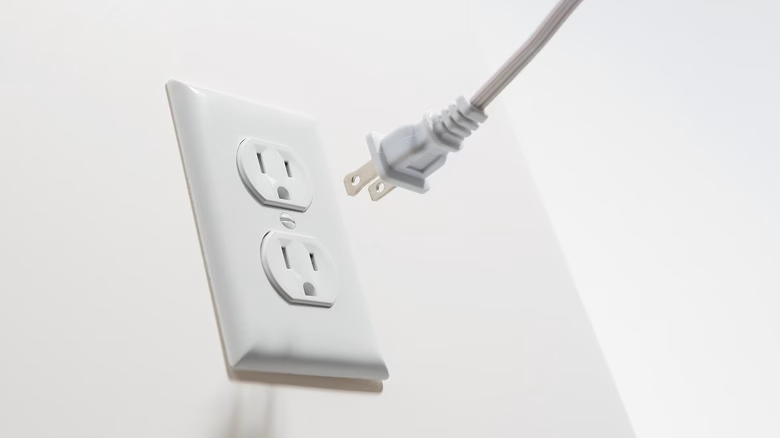The Grounding Truth: Can You Plug a Two-Prong Plug into a Three-Prong Outlet?
It’s a question I hear surprisingly often, especially from folks living in older homes or dealing with vintage appliances: "Can I just plug this two-prong thing into a three-prong outlet?" On the surface, it seems innocuous enough, doesn't it? After all, the two prongs fit into the larger slots. But as with most things electrical, what seems simple on the outside often hides a crucial complexity beneath. And in this case, that complexity is all about safety.
Understanding the Electrical Dance: Two vs. Three Prongs
Let's strip away the jargon for a moment and talk about what those prongs actually do. Think of your electrical outlet as a tiny, powerful gateway.
-
The Two-Prong Setup: This is the older standard. You've got two slots. One is for the "hot" wire, which carries the electricity to your device. The other is for the "neutral" wire, which carries it away, completing the circuit. Simple, right? For many years, this was perfectly adequate.
-
The Three-Prong Revolution: Then came the third hole, usually a rounded one. This is the ground connection. And let me tell you, this little hole is a big deal. Its job isn't to power your device directly. Instead, it's a dedicated safety path. If there's an electrical fault inside your appliance—say, a loose wire touches the metal casing—that stray current has a safe route to dissipate into the earth, rather than through you. It's a critical safety net, designed to prevent shocks and reduce fire risks.
The shift towards three-prong outlets wasn't just an aesthetic choice; it was a fundamental upgrade in electrical safety standards. Modern homes, and increasingly, even older ones undergoing renovations, are moving towards this safer standard.
The Physical Possibility vs. The Safety Reality
This is where the infamous "cheater plug" or grounding adapter comes into play. You know the one: it’s got two prongs and a little green wire or metal tab. The idea is that you plug your two-prong device into the adapter, then plug the adapter into the three-prong outlet, and finally, you attach that green tab to the screw on the outlet's faceplate. The theory is that this screw, if the outlet box is properly grounded, will provide the necessary ground path.
The Hidden Dangers: Why Grounding Matters
Ignoring the ground connection isn't just a minor oversight; it can have serious consequences.
-
Shock Hazard: This is the big one. If an internal fault causes the metal casing of your appliance to become energized, and there's no ground path, touching that appliance can send electricity right through your body to the ground. That's an electrical shock. And depending on the voltage and current, it can be anything from a tingle to fatal.
-
Fire Risk: Faulty wiring or component failures can lead to arcing or overheating. Without a ground path to safely trip a circuit breaker, this heat can build up, potentially igniting nearby materials. It’s not a common occurrence, thankfully, but when it happens, it's devastating.
-
Damage to Electronics: Sensitive electronics, especially computers and audio equipment, rely on a stable ground to function correctly and protect their delicate internal components from power surges or static discharge. Operating them ungrounded can lead to erratic behavior or even permanent damage over time.
Safer Solutions and Modern Upgrades
So, what's the responsible approach? If you're dealing with two-prong outlets in your home, or you frequently use older devices, here are some thoughts:
-
Upgrade the Outlets: The gold standard is to have a qualified electrician replace your two-prong outlets with modern three-prong, grounded ones. This often involves running a new ground wire back to your electrical panel, which can be a bit of an investment, but it's the safest long-term solution. Many homeowners are doing this now, recognizing the peace of mind it brings.
-
Install GFCI Outlets: Ground Fault Circuit Interrupter (GFCI) outlets are fantastic alternatives, especially where full rewiring isn't feasible or is too costly. GFCIs don't require a ground wire to function. Instead, they constantly monitor the current flowing through the hot and neutral wires. If they detect even a tiny imbalance (meaning current is leaking somewhere it shouldn't, like through a person!), they trip almost instantaneously, cutting off power. They're mandatory in kitchens, bathrooms, and outdoor areas, but they offer excellent shock protection for ungrounded circuits too. You can even install a GFCI breaker in your electrical panel to protect an entire circuit of two-prong outlets.
-
Double-Insulated Devices: Some modern two-prong devices are "double-insulated." This means they have extra layers of insulation to protect against internal electrical faults, making a ground connection less critical for safety. These devices will usually have a symbol on them – a square inside another square. For these, plugging them into a three-prong outlet without an adapter is generally safe, as they're designed to operate without a ground. But this is for the device, not the outlet.
Ultimately, when it comes to electricity, it's always better to err on the side of caution. That third hole isn't just for show; it's a silent guardian, waiting to protect you. Don't underestimate its importance. If you're unsure about your home's wiring, or how to safely connect an appliance, a quick call to a certified electrician is always the best move. It's an investment in your safety, and frankly, you can't put a price on that.
